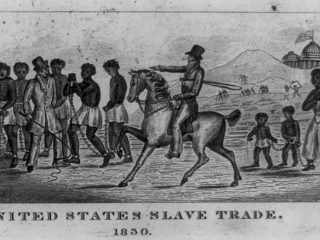The last soulful harmony of “Steal Away” faded with the credits. The lights came up as the appreciative audience erupted in applause. Another screening of the Emmy-winning film, “The Uncomfortable Truth”.
The film is not an easy one to watch. It forces you to confront some painful truths about ourselves and our country. But one person in the audience seemed particularly restless. She was middle-aged and white. Her hand shot up but it became abundantly clear she was in no mood to ask a question.
“I think the lynching image was too much. You didn’t need to show that,” she reprimanded me.
The image was of Jesse Washington. A 17-year-old black farmhand who was accused of raping and murdering a white woman. His speedy trial was met by an angry mob of thousands outside of the Waco, TX courthouse. They burned him alive. Pieces of his charred remains were kept as souvenirs.
Our societal guilt, as white Americans, should be palpable for these incredibly heinous acts committed in the name of white supremacy… but it’s not. We keep no ledger of these crimes in our conscious. We would like to think these were merely rogue acts by evil people. The truth is, this was a rather common occurrence in America. Between 1880 and 1890 one person was lynched every other day. Between 1880 and 1968 roughly 4,700 people were lynched; one a week for 88 years. And these are the ones we know about.
My research into lynchings was nothing short of disturbing. Acts so unreal as to seem almost made up. But each one was documented by a hungry press eager to feed the frenzy but careful to justify the outcome. The guilty party was always the one who was lynched.
The audience was silent as I formulated a response for this upset woman. I have confronted what I now know is called “white fragility” a lot. As civil rights activist and Freedom Rider, Luvaghn Brown, put it to me once, “No one likes to think of themselves as a son-of-a-b***.” I’ve learned to tread lightly in order to provide a space for learning but decided I wouldn’t hold back this time. I would not soften the blow.
“Actually ma’am, I decided not to include the worst story. Her name was Mary Turner.” I replied.
Mary Turner’s lynching on May 19, 1918 was so egregious that the NAACP would write about it anti-lynching material well into the 1940s. Mary was stripped naked, hung upside down, doused with gasoline and set on fire. Someone from the mob stepped forward and cut out her unborn child. It fell to the ground. Remarkably, the infant was still alive until the assailant’s boot crushed the baby’s head into the hard Georgia clay. Mary Turner’s crime? She had protested the lynching of her husband the week before.
The audience gasped. Heads shook in disbelief. White members of the audience didn’t know what to say. Then the next wave of horror hit them. Their eyes stayed forward. They couldn’t bring themselves to look at the black audience members in attendance who have lived with this legacy their entire lives as the horrors of our society slowly dawned on the members of white America.
Over 4,000 people have been lynched in America. They can’t tell you they’ve been lynched because they are dead… murdered. Only someone who doesn’t understand this or doesn’t care would say they’ve been lynched.
“Our national crime is lynching,” said Civil Rights Leader, Ida B. Well. It’s time, as white Americans, that we acknowledge these uncomfortable truths.




